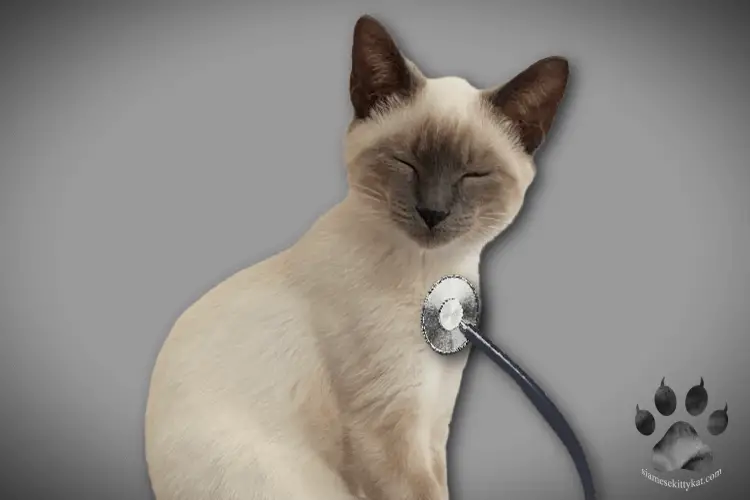Cats can sometimes be difficult to treat when it comes to matters of health and illness. That is why you must seek professional care for your feline friend as soon as possible.
Accidents and emergencies can arise even in the best-case scenario. This is where performing CPR on your cat comes in.
CPR is a life-saving technique that can be used to help a pet who has suffered cardiac arrest. You may need to perform CPR on your Siamese cat if he becomes unresponsive and stops breathing.
This article will discuss the basics of CPR, when it should be used, and how you can perform it correctly. Read on to learn more!
Should I Do a CPR on my Siamese Cat?
You must first check whether your Siamese cat needs a CPR to begin with.
It is not advisable to perform CPR on a healthy cat or one still showing signs of life. This could cause serious injury or even death to your beloved feline.
One way to determine if your cat needs CPR is to check its vital signs, such as breathing and a heartbeat.
You should also look for signs of cardiac distress, such as:
You should check with a vet to ensure whether conducting CPR on your cat is the right course of action.
Important Reminder:
Your decision to perform CPR on your Siamese cat will depend on your own comfort level.
Performing CPR could help save your pet’s life if you are confident to carry out this delicate procedure.
It may be best to leave this task up to trained professionals if you feel uncertain about your skills or are uncomfortable taking such risks with your pet’s well-being.
How Do You Perform CPR on a Siamese Cat?

It is possible to perform CPR on a Siamese cat with proper training. To do so effectively, however, you must consult an experienced veterinary professional who can help guide you through the process and provide specific instructions tailored to your pet’s needs.
1. Start by laying the cat down on a flat surface, such as a tabletop or the floor.
2. Check for responsiveness.
This involves placing your hand in front of your pet’s nose and mouth to see if he or she is breathing normally. You can also check for a heartbeat by placing your ear against the area where your cat’s left elbow touches his or her chest.
3. You will need to open the cat’s mouth gently and check for any obstructions or foreign objects blocking its airway. You need to remove it if you found one before you can begin artificial respiration.
4. Once the airway is clear, you can begin giving the cat gentle breaths by holding his mouth closed and lightly blowing into its nose once every 3 seconds. Ensure that your cat’s head remains slightly tilted, so its airways stay open.
You may need to give several breaths for oxygen to reach the cat’s lungs.
5. You should check for a pulse once you have performed artificial respiration on the cat. You can begin chest compressions if there is no pulse present.
Use your thumb and forefinger to compress. You should then press firmly on the cat’s chest, compressing it about three times between each breath.
After this, check to see if the cat is breathing normally by placing your ear close to its nose and watching for any movement in its chest or stomach.
Continue with repeated chest compressions at about 100-120 beats per minute if you haven’t detected any signs of breathing.
Along with these compressions, continue giving artificial respiration by gently blowing into the cat’s nose until you see regular breaths or hear a heartbeat.
Continue with these steps until help arrives or until the cat shows signs of breathing on its own.
Note: Remain calm during this process. Becoming too stressed or frustrated could interfere with your ability to effectively perform CPR on your Siamese cat.
Will Cats Survive If They Get CPR?
Not all cats that receive CPR will survive. This is mainly because most cats that need CPR have advanced stages of illnesses or diseases. This makes it more difficult for their bodies to recover after being resuscitated.
For a cat to be successfully resuscitated after receiving CPR, it must be in good health overall. His chances of survival are much lower if he has pre-existing conditions or other underlying health problems.
How to Prevent Situations Where a Cat Needs CPR

1. Regularly check your cat’s body for signs of illness or injury. This can include:
2. Keep an eye on your cat’s behavior and activity levels. A sudden change in behavior, such as lethargy or decreased appetite, could be a sign that something is wrong with your cat’s health.
3. Make sure that your cat always has access to clean water and food. Providing your cat with a regular routine for eating and drinking can be helpful. This will allow you to notice any changes in appetite that could indicate a problem.
4. Monitor your cat during interactions with other animals or children. Cats can be territorial and aggressive if they feel threatened. These types of encounters can sometimes lead to injury or trauma in some cases.
5. Make sure that your cat gets regular veterinary care. This will allow you to detect any illnesses or health conditions early on. Work with your vet to determine an appropriate treatment plan before the situation becomes more serious.
It can be difficult to perform CPR on small animals like cats. You may be able to give your pet the oxygen and blood flow they need to stay alive if you gain some practice.
Some important things to remember when performing CPR on a Siamese cat include monitoring their breathing and pulse, ensuring that they are in the correct position for chest compressions, and ensuring that you are using enough pressure when performing chest compressions.
You can ensure that your feline friend receives the best possible care in an emergency situation by becoming familiar with these steps.
We gathered all the health tips tailored towards maintaining your Siamese cat’s optimal well-being. Check it out here: Siamese Cat Health: A Complete Guide
